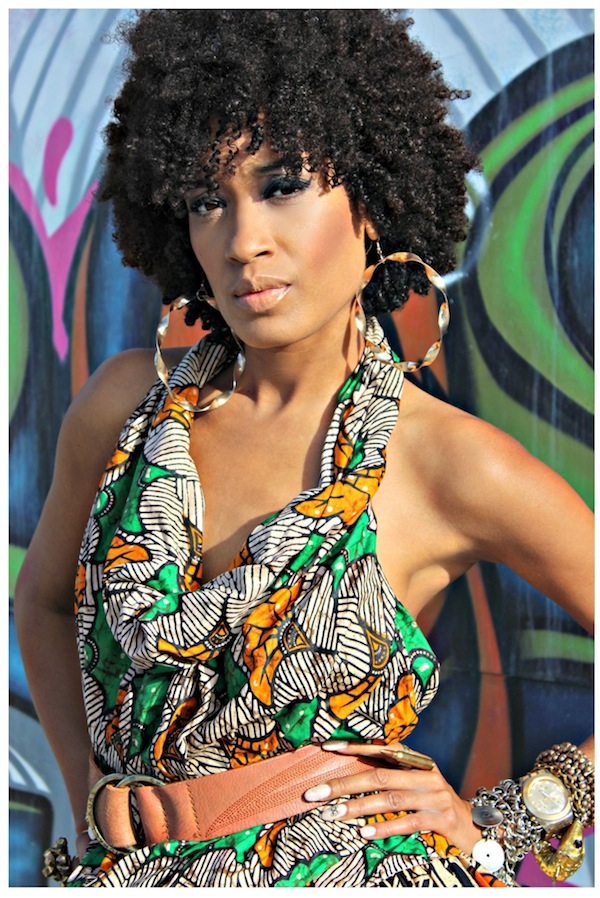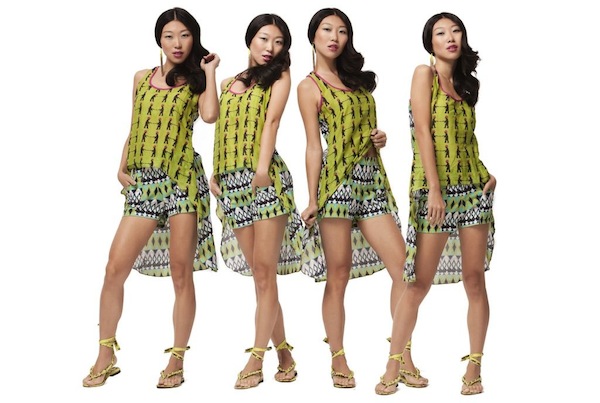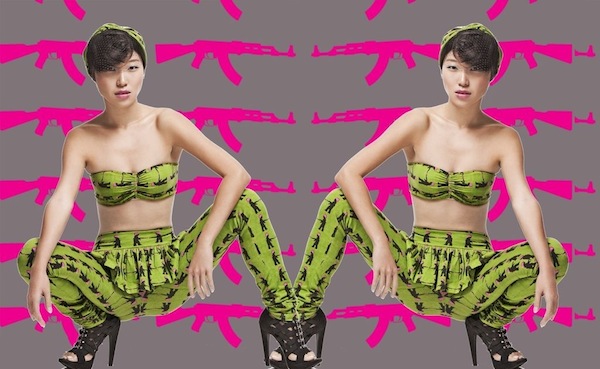LU: Why did you decide to go from working in non-profit to fashion? What is the link? Why did you feel this was the best way to accomplish the work you have set out to do?
MB: Most anthropologists work as a researcher, professor or non-profit executive. I took a conventional route, working seven years with non-profit organizations. In 2008, after a mildly major burn out, I decided to re-channel my commitment to raising awareness to social issues. I have always had a fanatical passion for fashion, so it became my obvious next step. I quit my cushy non-profit executive job, overlooked the pressure of looming student loans, and embarked on a new course of learning. The major motivation behind completely reinventing my life was a calling to make clothing and accessories for women like myself: cosmopolitan women who want the opportunity to express their political opinions as sophisticatedly as they express their femininity.
LU: Tell us about your organization, Bear Threads…
MB: I am developing Bear Threads, which is the nonprofit arm of Aliakim. It is a community development project committed to allowing children to make positive change in their communities through the creation of wearable art. By introducing the basic principles of fashion design to low income communities, middle and high school students are encouraged to design articles of clothing that represent an issue in their community that they would like to bring awareness to. Proceeds from the sales are funneled back into the community through donations to existing community organizations. The creation of shirts, bracelets, purses, hats and shoes becomes a form of artistic activism that allow young people to feel empowered to make a statement, as well as tangibly contribute to the development of their neighborhood. In communities where the biggest threat often takes the form of poverty, poor education, and lack of empowerment, Bear Threads aspires to awaken inner city youth to their power as active agents of change.
LU: On a lighter note, who are some of your style icons? Do you think your style is influenced by your West Indian background, and how?
MB: I’m in love with the work of Alexander McQueen, Mara Hoffman, Prada, and Miu Miu because of their use of color and prints, as well as their ability to tell a vivid story with their pieces. I know my Jamaicanism plays a big role in my designs. I see this influence in the loudness of my color choices and the aggressiveness of the imagery in my prints. Jamaicans are nothing if not extremely loud, aggressive and unapologetic. I know my unapologetic attitude towards standing behind what I create, even if it makes some uncomfortable, comes from the indelible confidence that is part and parcel of being Jamaican.
LU: What kind of music do you listen to?
MB: Dancehall is my absolute first love. Being 34, I remember when dancehall started, and I’ve been an avid fan ever since. I just designed a bullet ring that fits the gangster vibe of the collection, but is directly derived from the gun finger salute popularized by dancehall party etiquette. But my music [tastes] are eclectic, and definitely influenced by my travels. Living in London exposed me to musical styles like garage. My time in West and South Africa allowed me to fall in love with artists like Miriam Makeba, Fela, and Hugh Masekela. I get a lot of inspiration from music. Music makes me feel things very deeply that I ultimately channel into a piece of clothing or an accessory.






